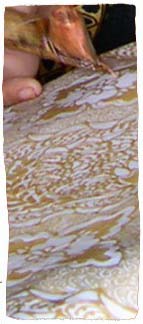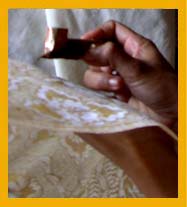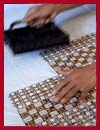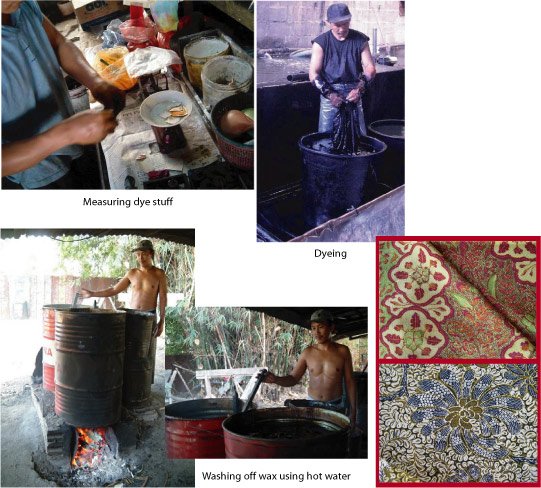|
 Batik Batik
Batik is known as one of the oldest method of decorating textile. It's done by applying wax on certain areas of fabrics (following the motifs designed), in order to fill in areas with particular colors preferred (please refer to "Color Application" for further information).
Indonesia is one of the countries around the globe that has a long history of Batik painting, besides India, Malaysia, etc. To Indonesians, Batik are closely related to their heritage and tradition. Though using similar batik method, batik fabrics from Indonesia are differentiated based on colors and motifs which translates to their origin areas/province. Indonesian famous batik works come mostly from Central Java such as Yogyakarta, Solo, Madura and Pekalongan, as well as some part of Bali. Batik from Central Java (Yogyakarta and Solo) are mostly dominated with brown and off-white (or cream) colors, while Pekalongan's are done in a more colorful way with influences from China and India due to Pekalongan geographical location that enable it to absorb various cultural elements towards it's function as one of the international trading ports back in the historical period (silk trading, etc).
 Batik Tulis Batik Tulis
The term "Tulis" means "To Write", which reflects the exact method of applying the wax as if one is writing on a piece of fabric, in this case using a special tool called "Canting".
"Canting" functions as a pen to create outlines on batik motifs. A small container of melted wax is attached to a wooden handle, with end for the wax to come out. This tip or end varies in numbers in order to create different lines on the finished batik cloth; for example: 2 tips, 3 tips.
Batik Tulis can be easily recognized by looking into the slightly uniformity on the motifs within one batik cloth. This method of creating batik is the most time consuming as well as valuable due to its difficulty.
 Batik Cap Batik Cap
"Cap" means "Stamp". Batik cap is created by applying motifs using stamp that is previously stamp on to the melted wax container and then stamp on to the fabric in which the batik is to be made.
Using stamp in creating batik motifs does save time and provides more consistency on the design lines (motifs).
Nowadays, people started to develop their own designs (both traditional and contemporary) on these stamps when creating their signature batik collections.
Color Application
Coloring is done by applying wax on certain areas of fabrics (following the motifs designed), in order to fill in areas with particular colors preferred. In batik, area that is covered with wax is not the area that will be dyed/colored (Negative area). Wax is applied on certain area of the fabric in order to protect the area from absorbing dyestuff (dye resistant). The simplest color application in Batik is when only 2 colors are used in the dyeing process. When applying 2 different colors, the lighter color (for example, light blue) is applied onto the fabric in the first dyeing process, by covering areas to be colored with the other darker color (for example, midnight blue) with melted wax. After the fabric is dyed in light blue, the wax covering the areas for midnight blue needs to be washed away to prepare the second dyeing process (midnight blue). Fabric is dipped into hot water which will melt the wax and then wash it through with cold water. After the fabric is cleaned and dried, then it's ready to be dyed with the second color (midnight blue), by applying wax onto the light blue areas in order to protect them from absorbing midnight blue color.
The more colors a batik fabric has, the more time consuming the process is which will lead to a more expensive batik piece. There are occasions where we can see batik with 5 or 6 different colors applied within one fabric.

|

